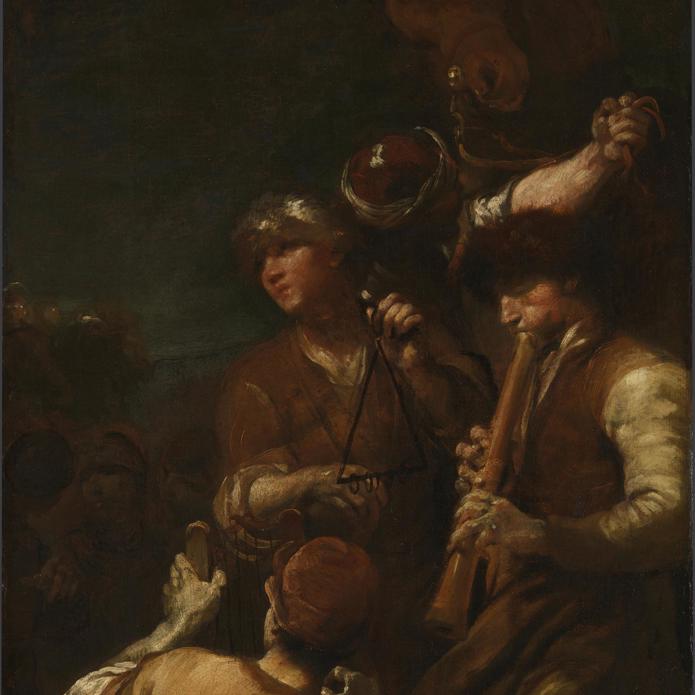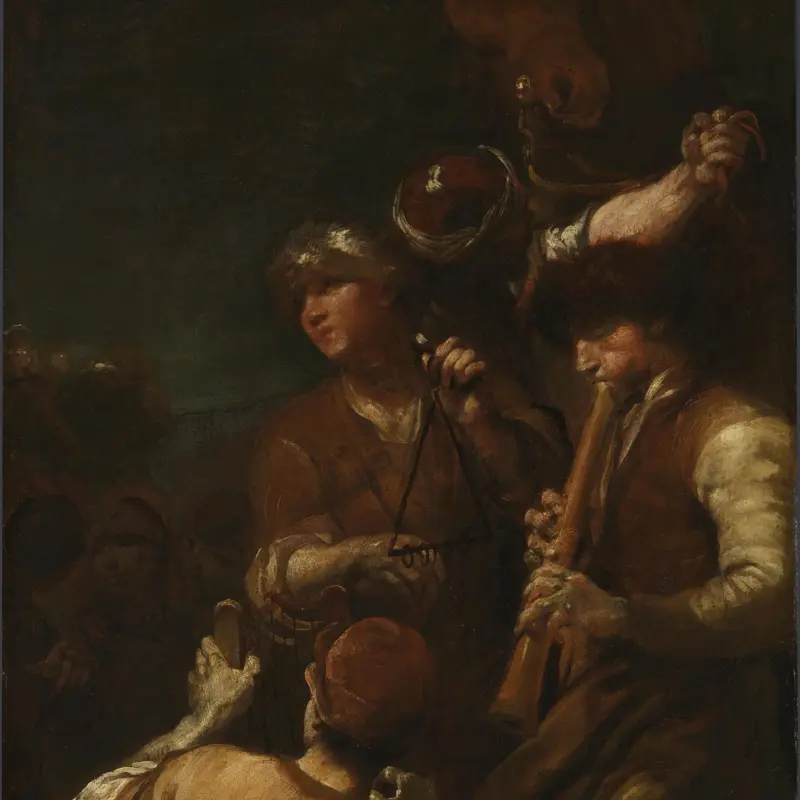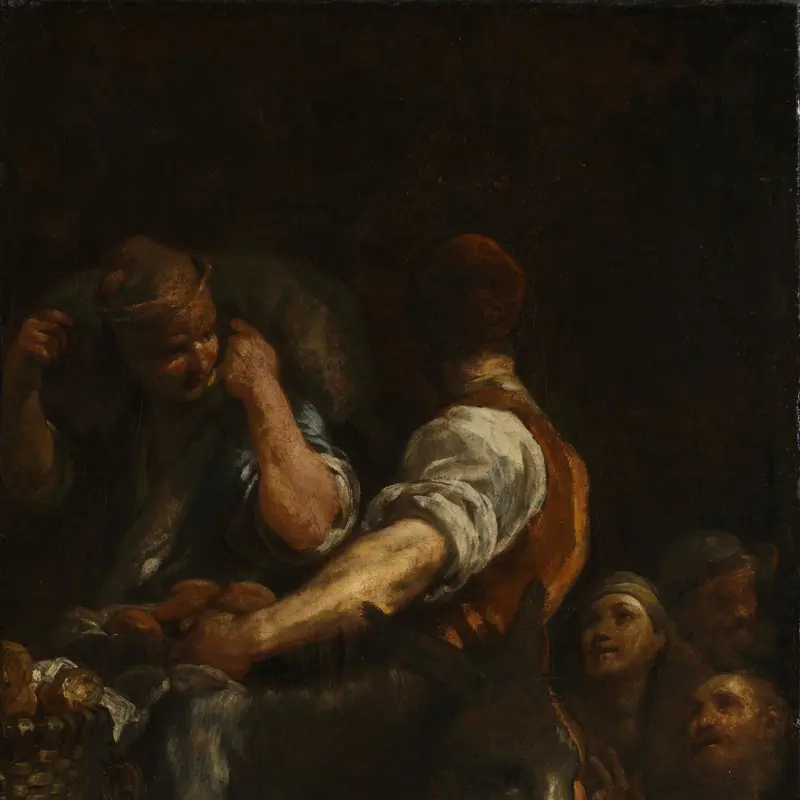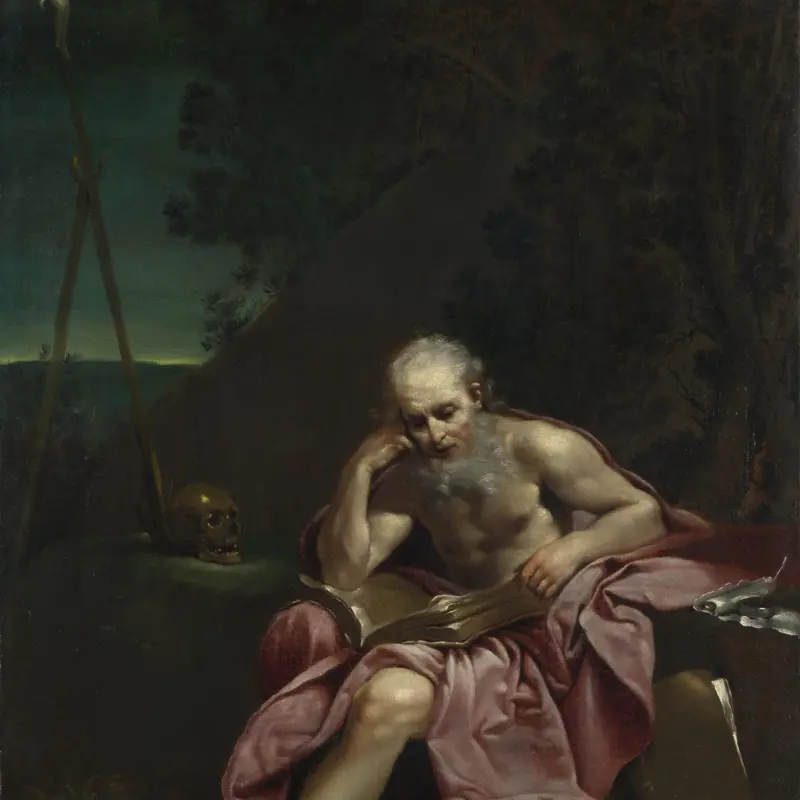Giuseppe Maria Crespi, 'Musicians', about 1710-15
About the work
Overview
In this slender painting, three musicians play their instruments – a large triangle with rings, a recorder and a lyre. None of them look out at the viewer, and two actually turn away, a pose for which Crespi was well known. A turbaned man pulling his horse by the bridle looms over the trio. To the left, in almost complete darkness, are three soldiers, with several more on horseback behind them.
Crespi’s use of dazzling light and deep shadow leads us through this nocturnal scene, from the lower musician’s crossed legs to the captivated child on the left, up to the upper bodies of the main figures and the forearm thrust out above them. He applied thick paint in the lightest areas, creating luminous effects in the white sleeves and exposed skin of the musicians, with thinner layers in shadowed areas. The palette is predominantly made up of earthy tones – warm reds and browns – with touches of off-white.
Key facts
Details
- Full title
- Musicians
- Artist
- Giuseppe Maria Crespi
- Artist dates
- 1665 - 1747
- Part of the series
- Two Peasant Scenes
- Date made
- About 1710-15
- Medium and support
- Oil on canvas
- Dimensions
- 100.8 × 50.1 cm
- Acquisition credit
- Presented by the Trustees of Sir Denis Mahon's Charitable Trust through the Art Fund, 2013
- Inventory number
- NG6626
- Location
- Not on display
- Collection
- Main Collection
- Frame
- 20th-century Replica Frame
Provenance
Additional information
Text extracted from the ‘Provenance’ section of the catalogue entry in Gabriele Finaldi and Michael Kitson, ‘Discovering the Italian Baroque: The Denis Mahon Collection’ (exh. cat. National Gallery, London, 1997), London 1997 and supplemented by the National Gallery’s Annual Report, ‘The National Gallery: Review of the Year, April 2012 – March 2013’; for further information, see the full catalogue entry.
Bibliography
-
2001
C. Baker and T. Henry, The National Gallery: Complete Illustrated Catalogue, London 2001
-
2014National Gallery, The National Gallery: Review of the Year, April 2012 - March 2013, London 2014
About this record
If you know more about this work or have spotted an error, please contact us. Please note that exhibition histories are listed from 2009 onwards. Bibliographies may not be complete; more comprehensive information is available in the National Gallery Library.
Images
About the series: Two Peasant Scenes

Overview
Peasants with Donkeys and its companion painting Musicians are intimate scenes of peasant life, observed by night as if we ourselves are part of the action. Both make use of a warm, earthy palette and lively, loose brushwork to bring the figures they depict to life. The two pictures probably date from between 1710 and 1715, shortly after Crespi’s stay in Florence.
These pictures were formerly thought to be fragments of a single composition, perhaps an Old Testament subject. Close examination of the canvases, however, has shown that they were part of two separate, though related, works. Both have at some point been cut down at the left and top edges, and it is impossible to know how large they originally were. They are slightly different sizes but the similarities in the scale of the figures, the range of colour and the lively brushstrokes suggest that they must have been intended to hang together.



